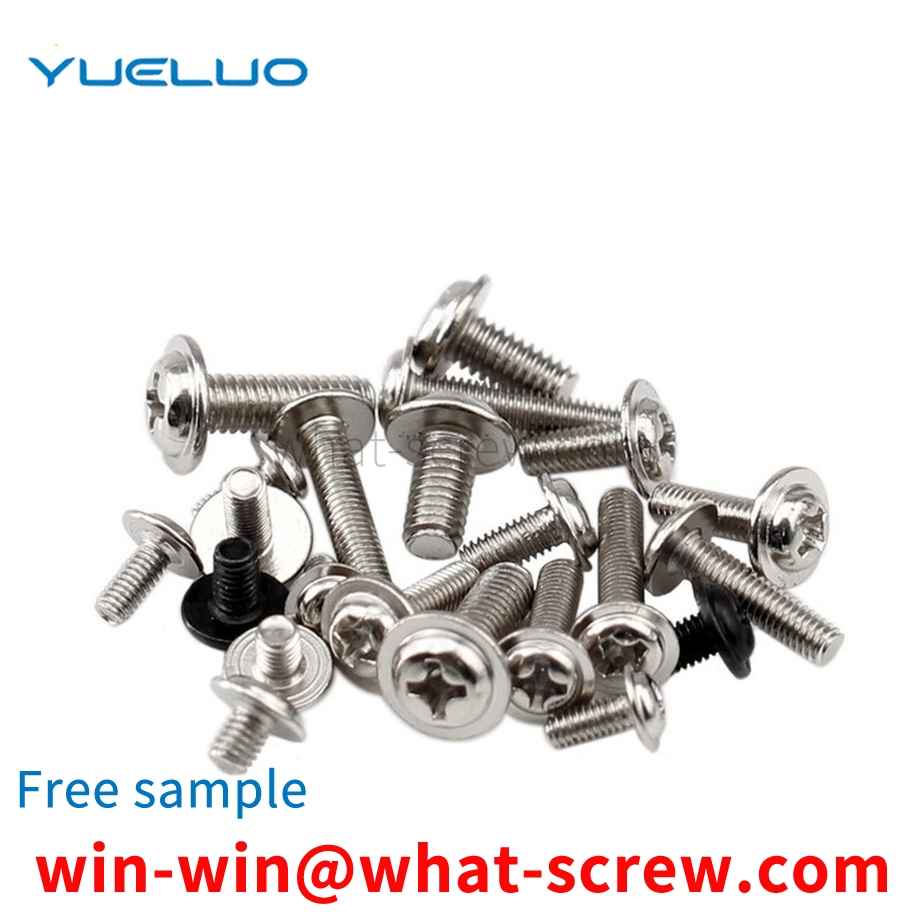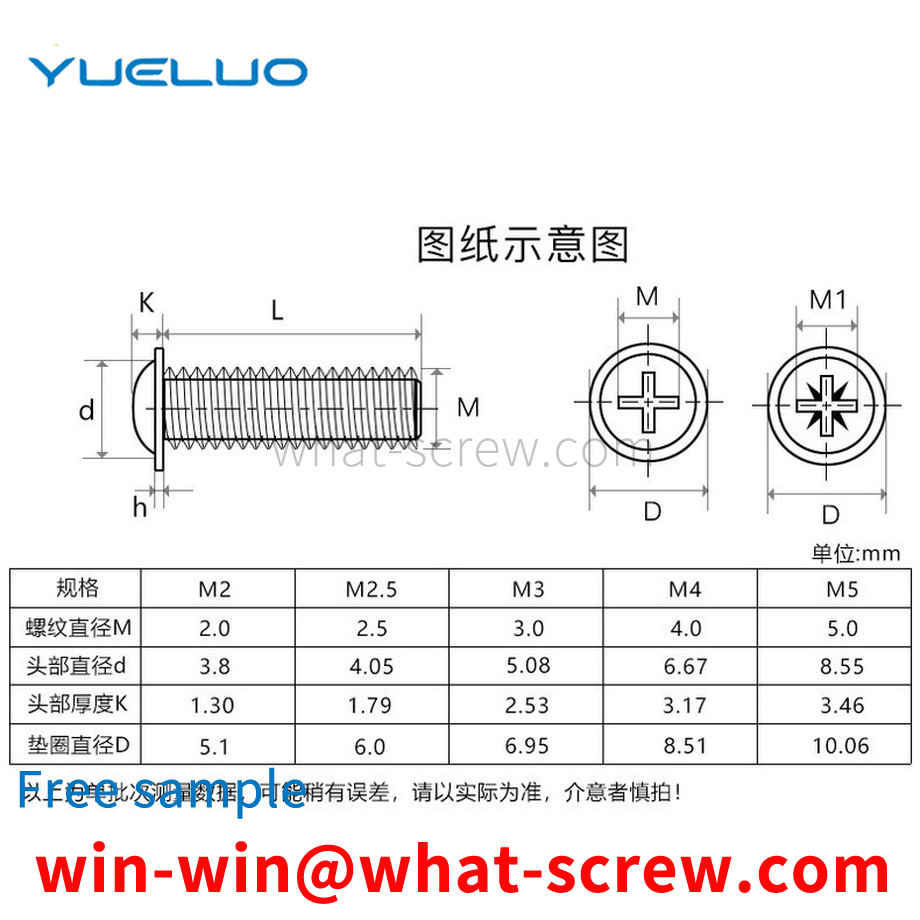Nuts are very common fasteners. Generally, the torque cannot be limited when the nut is twisted. The degree of tightness of the nut is mostly judged by the worker's experience. In this way, when the nut is over-tightened, it will lead to the destruction of the thread pair, thereby shortening the fastener. The life of the nut may even cause the bolts to be pulled off in severe cases; and the nut is too loosely screwed, which will lead to the problem of insecure fixing.
screw is a common connecting piece, a tool that uses the physical and mathematical principles of the circular rotation and friction of an object to fasten the parts of the object step by step. Screws are indispensable industrial necessities in daily life: tiny screws used in cameras, glasses, clocks, electronics, etc.; general screws in televisions, electrical products, musical instruments, furniture, etc.; as for engineering, construction, and bridges, large screws are used. Screws and nuts; transportation equipment, airplanes, trams, automobiles, etc. are used together with large and small screws. Screws have important tasks in industry. As long as there is industry on earth, the function of screws will always be important. The screw is a common invention in people's production and life for thousands of years. According to the application field, it is a great invention of human beings. A traditional screw is generally set as a screw head at one end and a screw rod at the other end, which cooperates with an external nut to fasten the connector between the screw head and the nut. However, such as some home appliance modules, chassis and other electrical appliances, the modules and boxes fixed by traditional screws often fasten many parts together by screws. During maintenance, it is necessary to disassemble all parts of the maintenance part, which is very troublesome. Therefore, a new type of screw structure that can be connected at both ends and can realize layered installation is required. During maintenance, only the connecting layer of the maintenance part needs to be disassembled, and neither the exterior nor the interior needs to be disassembled.
flat washer is also called a flat washer. It is mainly stamped out of an iron plate. The shape is generally a flat washer with a hole in the middle. The size of this hole is generally determined according to customer requirements. There are 9 standards for flat washers in my country. From 2000 to 2002, GB/T97.3-2000, GB/T5286-2001, GB/T95-2002, GB/T96.1-2002, GB/T96.2 were approved and released respectively. -2002, GB/T97.1-2002, GB/T97.2-2002, GB/T97.4-2002 and GB/T5287-2002 Standard for flat washers. According to the performance grade of the flat washer, the author recommends the use of materials: ST12, ST13, Q235, Q215, Q195, etc. can be selected for the 100HV grade, and the surface hardness can reach about 110HV; 08F, 08Al, 10, 10F, etc. can be selected for the 140HV grade etc., the surface hardness can reach about 140HV; for 200HV and 300HV grades, 45, 50, 60, 70 or 65Mn steel should be selected, which can be quenched and tempered by heat treatment to meet the technical requirements of 200~300HV and 300~400HV. Because according to the standard, flat washers of 100HV and 140HV grades can be manufactured from mild steel. Most enterprises use Baosteel materials when selecting materials, which is convenient for cold stamping. The following is a brief description of Baosteel's standards. Compared with the BZJ407-1999 standard, there are major changes in Continuous Cold Rolled Low-Carbon Steel Plates and Strips and the enterprise standard: (1) The grades have been revised and integrated, and the grades have been changed from 8 commonly used to 5. St12 is changed to DC01; ST13 is changed to DC03; St14, St15 is changed to DC04; BSC2 is changed to DC05; St16, St14-T, BSC3 is changed to DC06. (2) The surface quality level is changed from two to three: the higher-level finishing surface (FB), the surface is allowed to have a small amount of defects that do not affect the formability and coating and plating adhesion, such as slight scratches, indentations, Pock, roll printing and oxidation color, etc. Premium Finished Surface (FC) products have no visible defects on the better of the two sides and must meet at least FB requirements on the other side. The super-advanced finishing (FD) product must not have any defects on the better side of the two sides, that is, it cannot affect the appearance quality after painting or the appearance quality after electroplating, and the other side must at least meet the requirements of FB. (3) The surface structure is modified from four to two, and the control value of surface roughness is increased. The average roughness Ra when the surface structure is pitted (D) is 0.6 μm. (4) The provisions on Si and residual elements in the chemical composition of the five grades have been cancelled, and the contents of elements such as C, S, and Alt have been revised.
It is suitable for plates of various thicknesses, with a minimum thickness of 0.8mm. When using, the tail number Z corresponding to size A must be determined according to the thickness of the plate and the specification of the nut. The user selects samples and orders according to the tail number in the table according to the thickness of the plate; Accurate control, processing according to the tolerance size of 0-+0.075mm, is punching, and the nut should generally be installed from the broken surface of the plate. The installation process is generally achieved through press riveting operations, and must not be impacted and knocked in.
Stainless steel nuts generally have or become loose during use, which mainly depends on the thread. As for the threaded sleeve, it is a new type of threaded fastener, which is a spring-shaped inner and outer thread concentric body precisely machined from stainless steel wire with high-precision diamond cross-section. Of course its performance is also very good. The following are the following methods of loosening stainless steel nuts: 1. On the mechanical parts loaded with metal or non-metallic materials (such as aluminum, magnesium and other light alloy engineering materials), it can form high strength, wear resistance, high precision standard internal thread. Such as applications: high-voltage switchgear, hydraulic machinery, welding equipment |, tobacco machinery, microwave communications, auto parts, air separation equipment, coal machinery, power machinery, textile and chemical fiber machinery, etc.
We have many years of experience in the production and sales of screws, nuts, flat washers, etc. The main products are: mother and daughter nails, hexagonal lock nuts, mechanical accessories bolts, ingot casting nuts and other products, we can provide you with suitable fastener solutions for you Program.



















 Service Hotline
Service Hotline




